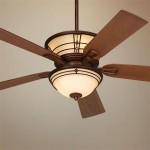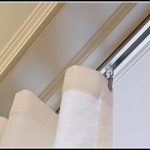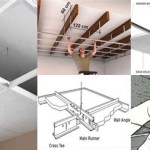Types of Ceiling Finishes Material
Ceiling finishes are crucial elements of interior design, offering both aesthetic appeal and functional benefits. The selection of ceiling finishes materials impacts the ambiance of a space, its acoustic properties, and even its thermal performance. Numerous materials are available, each possessing unique characteristics that cater to specific design goals and budgetary constraints. This article provides an overview of common ceiling finish materials, highlighting their properties, applications, and advantages.
Gypsum Board (Drywall)
Gypsum board, commonly known as drywall, is one of the most widely used ceiling finish materials in residential and commercial construction. It comprises a gypsum core sandwiched between two layers of paper. Its popularity stems from its ease of installation, relatively low cost, and versatility.
Drywall offers a smooth, paintable surface that can be adapted to various design styles. It is suitable for creating flat, curved, or textured ceilings. Adding insulation behind drywall can enhance its thermal and acoustic performance, making it a practical choice for creating comfortable and energy-efficient spaces. It is also a fire-resistant material, providing an added layer of safety.
However, drywall is susceptible to moisture damage and requires careful installation to avoid unsightly seams and imperfections. Water leaks can cause the gypsum core to crumble, necessitating costly repairs or replacement. Professional installation is generally recommended for optimal results.
Several types of drywall are available, including standard, moisture-resistant (often referred to as "green board"), and fire-resistant varieties. The appropriate type should be selected based on the specific environmental conditions of the space.
Acoustic Ceiling Tiles (ACT)
Acoustic ceiling tiles (ACT) are designed to absorb sound and reduce echo, making them ideal for spaces where noise control is essential, such as offices, classrooms, and theaters. These tiles are typically made from mineral fiber, fiberglass, or other sound-absorbing materials. They are installed in a suspended grid system, creating a modular ceiling that is easy to access for maintenance and repairs.
ACT offers several advantages, including excellent acoustic performance, ease of installation, and a relatively low cost. The tiles come in a variety of sizes, colors, and textures, allowing for some degree of design flexibility. They can also be easily replaced if damaged, simplifying maintenance.
Despite their acoustic benefits, ACT generally lacks the aesthetic appeal of other ceiling finish materials. The tiles often have a utilitarian appearance, which may not be suitable for all spaces. Furthermore, while some ACT products offer moisture resistance, they are generally not recommended for high-humidity environments.
The acoustic performance of ACT is measured by its Noise Reduction Coefficient (NRC), which indicates the percentage of sound absorbed by the material. Higher NRC values indicate better sound absorption. Selecting ACT with an appropriate NRC value is crucial for achieving the desired acoustic environment.
Wood Ceilings
Wood ceilings offer a warm, natural, and aesthetically pleasing alternative to drywall and ACT. They can be constructed from solid wood planks, wood panels, or wood veneer. Wood ceilings are available in a wide range of species, finishes, and patterns, allowing for a high degree of customization.
Wood ceilings can enhance the visual appeal of a space, creating a sense of luxury and sophistication. They also offer some degree of acoustic insulation, although additional soundproofing measures may be necessary in noise-sensitive environments. Wood adds character and a tactile element that other materials often lack.
However, wood ceilings are generally more expensive than drywall or ACT. They can also be more complex to install, requiring specialized skills and equipment. Wood is susceptible to moisture damage and insect infestation, so proper sealing and maintenance are essential.
The type of wood selected for the ceiling will significantly affect its appearance and performance. Hardwoods, such as oak and maple, are durable and resistant to wear, while softwoods, such as pine and cedar, are more affordable and easier to work with. The finish applied to the wood will also influence its appearance and its resistance to moisture and scratches.
Metal Ceilings
Metal ceilings are gaining popularity as a durable, modern, and versatile ceiling finish material. They are typically constructed from aluminum, steel, or copper, and can be configured in various forms, including panels, tiles, and linear strips. Metal ceilings offer a sleek, industrial aesthetic that is well-suited for contemporary spaces.
Metal ceilings are known for their durability, fire resistance, and low maintenance requirements. They are also resistant to moisture damage and insect infestation, making them a suitable choice for demanding environments. Metal can effectively reflect light, potentially reducing the need for artificial lighting.
Metal ceilings can be more expensive than drywall or ACT. Installation can require specific tools and expertise, potentially increasing labor costs. Metal can be a good conductor of sound, so acoustic insulation may be necessary to mitigate noise reflections.
Metal ceilings are available in a variety of finishes, including polished, brushed, and powder-coated options. Perforated metal panels can also be used to improve acoustic performance. The type of metal and finish selected will affect the ceiling's appearance, durability, and cost.
Plaster Ceilings
Plaster ceilings are a traditional finish material known for their smooth, durable, and aesthetically pleasing surface. Plaster is a mixture of lime, sand, and water that is applied in multiple coats to a lath base. Plaster ceilings offer a timeless elegance that is often found in historic buildings and high-end residences.
Plaster ceilings provide excellent sound insulation and fire resistance. They can be molded into intricate designs and decorative features, adding architectural detail to a space. Plaster is also a breathable material, which helps regulate humidity levels within a building.
Plaster ceilings are relatively labor-intensive, making them more expensive than drywall or ACT. Installation requires specialized skills and experience. Plaster is susceptible to cracking, especially in areas with significant temperature or humidity fluctuations. It can also be very heavy, requiring a substantial support structure.
Modern plaster systems often incorporate additives that improve its durability, flexibility, and workability. These additives can reduce the risk of cracking and make the plaster easier to apply. Proper preparation of the lath base is crucial for ensuring the long-term performance of a plaster ceiling.
Fabric Ceilings
Fabric ceilings involve stretching fabric tightly across a frame or track system to create a smooth, seamless ceiling surface. This type of ceiling finish offers a unique aesthetic and excellent acoustic properties. The fabric can be chosen from a wide range of colors, textures, and patterns, creating design flexibility. It is often used in home theaters, recording studios, and other spaces where sound control and visual appeal are important.
Fabric ceilings offer a clean and modern aesthetic. The fabric is usually lightweight, easy to clean, and can hide imperfections in the existing ceiling structure. The fabric can be printed with custom designs or images, allowing for a truly unique and personalized ceiling.
Fabric ceilings are generally more expensive to install than drywall or ACT. The fabric can be damaged by sharp objects, and it may require professional cleaning to maintain its appearance. While the fabric helps absorb sound, it may not provide sufficient acoustic insulation for all applications, and additional insulation may be required.
Different types of fabric can be used for ceiling applications, including polyester, cotton, and silk. The choice of fabric will affect its appearance, durability, and acoustic performance. The fabric should be treated with a fire-retardant coating to ensure safety.
Exposed Ceilings
Exposed ceilings leave the structural elements of the ceiling visible. This type of finish is often found in industrial, loft, and contemporary spaces. It can showcase the building's original construction, such as exposed beams, ductwork, and piping. Exposed ceilings can create a sense of openness and height, making a space feel larger.
Exposed ceilings can be a cost-effective option. They eliminate the need for additional finish materials. They offer a raw, industrial aesthetic that can be very appealing in certain contexts. They also allow for easy access to mechanical and electrical systems for maintenance and repairs.
Exposed ceilings may not be suitable for all spaces. They can be noisy, as sound can easily reflect off the hard surfaces. They may also require more frequent cleaning, as dust and debris can accumulate on the exposed elements. The aesthetic of an exposed ceiling may not be appropriate for more formal or traditional settings.
The appearance of an exposed ceiling can be enhanced by painting or staining the structural elements. Cables and wires can be neatly organized and concealed to improve the overall aesthetic. Acoustic treatments, such as sound-absorbing panels or baffles, can be added to mitigate noise reflections.
Suspended Ceilings (Grid Ceilings)
Suspended ceilings, also known as grid ceilings, consist of a metal grid suspended from the structural ceiling, with individual tiles or panels inserted into the grid. This type of ceiling is commonly used in commercial buildings, offices, and retail spaces. Suspended ceilings offer several advantages, including easy access to above-ceiling utilities, acoustic control, and design flexibility.
Suspended ceilings are relatively easy to install and maintain. The tiles or panels can be easily replaced if damaged or stained. They provide a convenient way to conceal wiring, ductwork, and other utilities. They also offer good acoustic performance, reducing noise levels within a space.
Suspended ceilings can lower the perceived ceiling height, which may not be desirable in all spaces. The tiles or panels can be susceptible to water damage, mold growth, and sagging. The overall aesthetic of a suspended ceiling can be somewhat utilitarian, although a wide range of tile and panel designs are available.
The tiles or panels used in suspended ceilings can be made from various materials, including mineral fiber, fiberglass, metal, and wood. The choice of material will affect the ceiling's appearance, acoustic performance, and cost. The grid system can also be customized with different colors and finishes.
Choosing the right ceiling finish material involves careful consideration of aesthetic preferences, functional requirements, budgetary limitations, and environmental conditions. Each material offers unique advantages and disadvantages, and the optimal choice will depend on the specific needs of the space.

What Are The Types Of Ceiling Materials Fall Ceilings

Top 6 Types Of False Ceiling Materials For Stunning Interior Designs Nerolac

Ceiling Finishes
8 Types Of False Ceiling For Home

Top 6 Types Of False Ceiling Materials For Stunning Interior Designs Nerolac

Types Of False Ceiling Vm Singapore Partition Wall Contractor

Home Interior False Ceiling Types

Top 6 Types Of False Ceiling Materials For Stunning Interior Designs Nerolac

The 8 Diffe Types Of Ceilings 9wood

From Smooth To Textured 7 Styles Of Ceiling Texture Types Finishes
Related Posts








